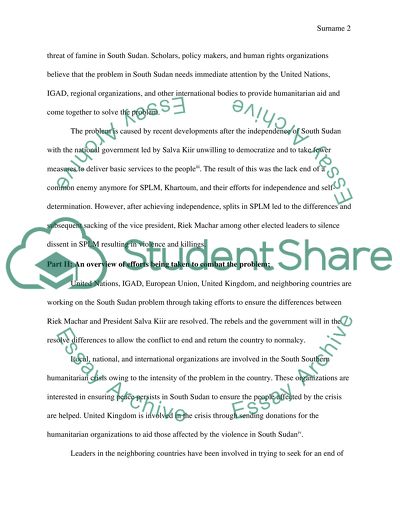Cite this document
(Human Rights Issue - Internal Conflict in South Sudan Case Study, n.d.)
Human Rights Issue - Internal Conflict in South Sudan Case Study. Retrieved from https://studentshare.org/humanitarian/1666084-international-human-rights
Human Rights Issue - Internal Conflict in South Sudan Case Study. Retrieved from https://studentshare.org/humanitarian/1666084-international-human-rights
(Human Rights Issue - Internal Conflict in South Sudan Case Study)
Human Rights Issue - Internal Conflict in South Sudan Case Study. https://studentshare.org/humanitarian/1666084-international-human-rights.
Human Rights Issue - Internal Conflict in South Sudan Case Study. https://studentshare.org/humanitarian/1666084-international-human-rights.
“Human Rights Issue - Internal Conflict in South Sudan Case Study”. https://studentshare.org/humanitarian/1666084-international-human-rights.


